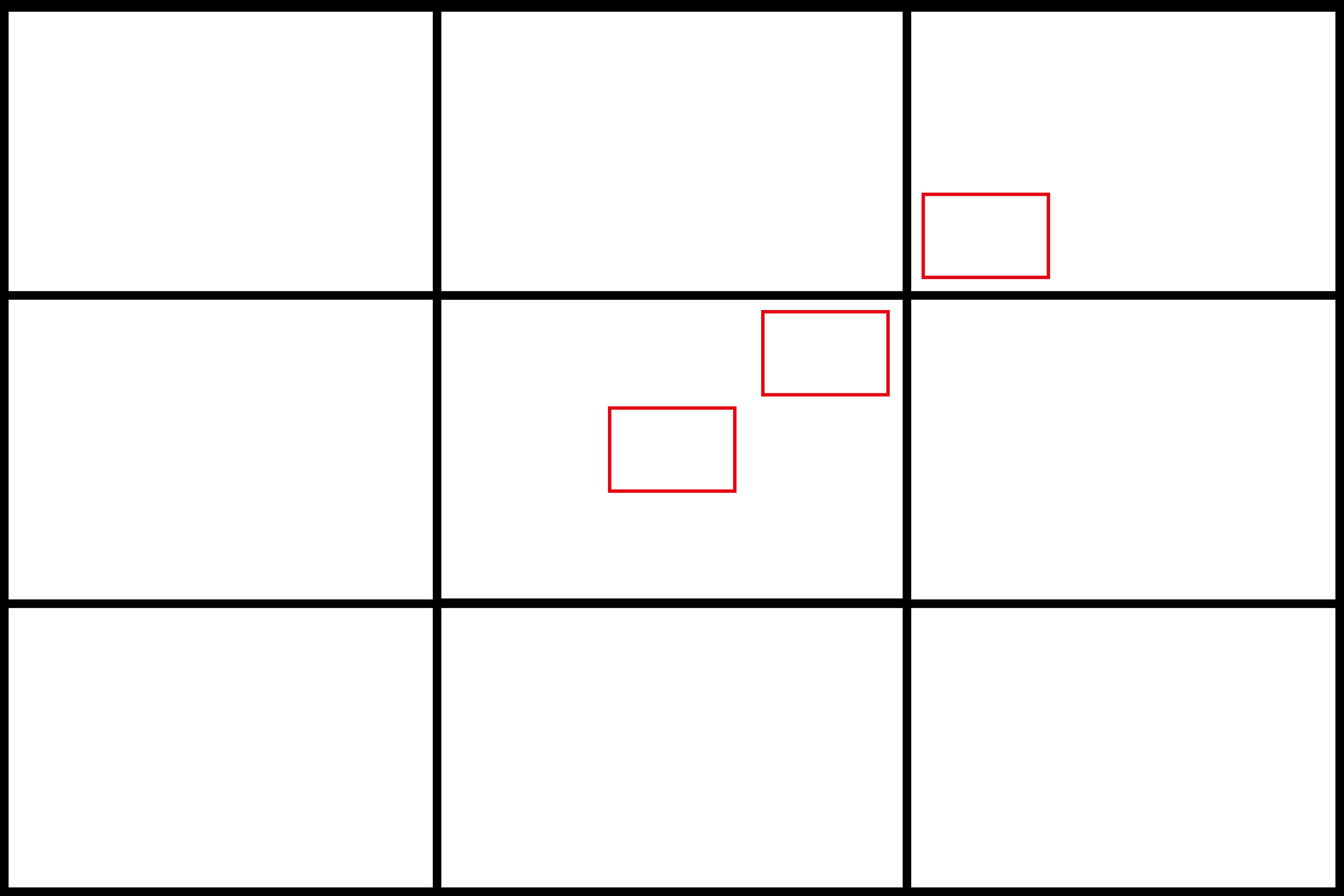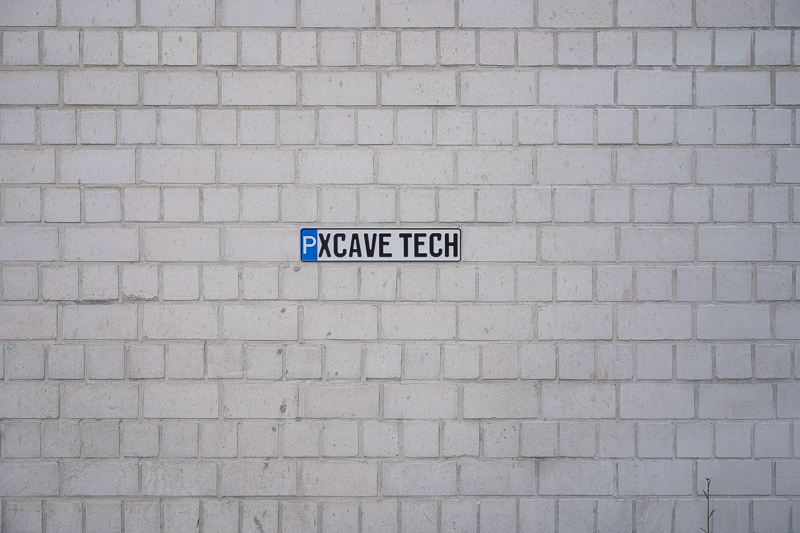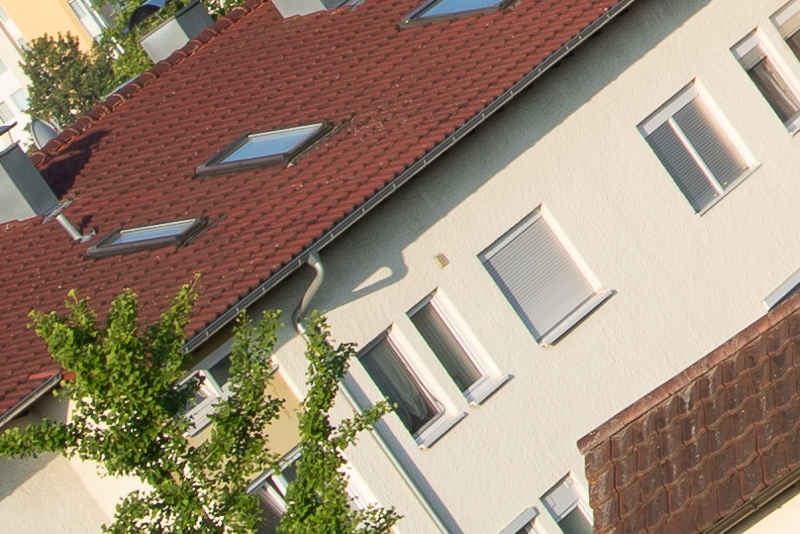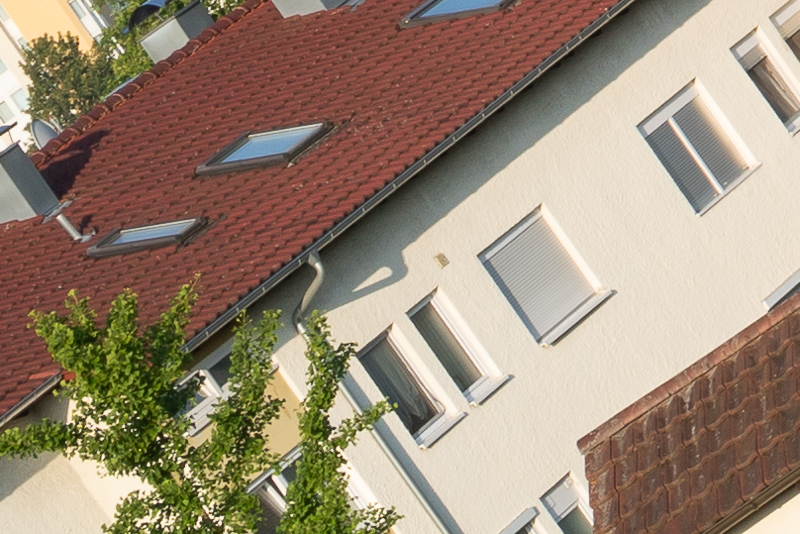Introduction

In early 2021 Sony released three compact fullframe E-mount lenses and this Sony FE 40mm 2.5 G is one of those. While many of the competitors often cut corners with their compact lenses when it comes to build quality, feature set and sometimes also optical quality, Sony decided to go for a different approach here, offering more, but also at a higher price point. Did that pay off? Let’s find out in this review!
Sample Images






Most of the sample images in this review can be found in full resolution here.
Contents
Specifications
The Sony FE 40mm 2.5 G has the following specifications:
- Diameter: 68 mm
- Length: 45 mm
- Weight: 171g (measured)
- Field of view: 57° (diagonally)
- Filter Diameter: 49 mm
- Number of Aperture Blades: 7 (rounded)
- Elements/Groups: 9/9

- Close Focusing Distance: 0.28 m
- Maximum Magnification: 1:4.0 (measured)
- Mount: Sony E
buy from Amazon.com | Amazon.de | B&H | ebay.com (affiliate links) for $548
Disclosure
A good friend and long time reader lend me this lens for a few weeks to write this review. Thanks a lot!
Handling / Build Quality

When it comes to compact lenses manufacturers often like to cheap out on build quality and features, but Sony decided to take a different approach with their small G lenses, as we can find all the controls we are used from the GM primes: de-clickable aperture ring, AF/MF switch and lens button. If you are used to other (higher end) Sony lenses this is very nice as you will feel right at home.
The focus ring has a very nice and even resistance. It takes exactly 180° from the minimum focus distance of 0.28 m to infinity and the coupling is linear.
In the marketing material Sony also shows some pictures without the paint where you can see that the outer casing is actually made of metal.

On the left side you can find a lens button and an AF/MF switch.

At the bottom there is also a de-click lever for the aperture ring to be found.
This Sony FE 40mm 2.5 G ships with an interesting looking lens hood, which I am sure offers great protection, but won’t win any prizes for great design. The owner of this lens is using the Sony FE 24mm 2.8 G’s hood instead, which offers less protection but also looks much nicer.

Among Sony’s fullframe E-mount lenses this is one of the smallest, but compared to the Voigtländer VM 40mm 1.4 Nokton it looks unnecessarily big. Not exactly a fair comparison, but still an interesting one.
Autofocus
I am not shooting sports or fast moving animals/humans so if you want to know if the lens is fast enough for this, or how it compares to other lenses in this segment, you may have to look for a different review with a more detailed assessment of this aspect.
The AF was always fast and accurate and it is also completely silent.
Vignetting

| f/2.5 | 2.3 EV |
|---|---|
| f/4.0 | 1.7 EV |
| f/5.6 | 1.5 EV |
| f/8.0 | 1.2 EV |
| f/11 | 1.0 EV |
Small lenses often show higher vignetting figures so I was a bit afraid what we might discover here, but they are actually comparable to less compact E-mount lenses and stopped down in fact lower than what we have seen from the Sony FE 35mm 1.8 and the Sony FE 35mm 2.8 ZA.

It is recommended to have a look at this article first to get an idea how this brightness graph works.
Sharpness
Infinity (42mp Sony A7rII)


Let me save you some time here: the performance in this category is amazing. Worthy of a modern high performance lens.
From f/2.5 this lens is fully usable across the whole frame: no midzone dip, no soft corners. If you look closely: stopping down to f/4.0 increases structure and acuity a bit, but you probably need a high resolution camera and zoom in to 100% to even notice it.
Portrait 1.2 m (42mp Sony A7rII)
For portraiture it isn’t so important how flat the field is, it is more interesting to see what the sharpness is like when focused at different parts of the frame to take field curvature out of the equation.

We will be looking at 100% crops from the 42mp Sony A7rII.
f/2.5 <—> f/4.0
At portrait distances the performance is just as amazing. I am not even sure if I have ever seen this much moiré here.
Close 0.28 m, 1:4.0 (42mp Sony A7rII)
This Sony FE 40mm 2.5 G also offers an appealing 1:4.0 maximum magnification. At close distances f/2.5 does look a bit softer, stopping down of course helps with that.
Flare resistance

The recent Sony lenses perform pretty good in this category – even those with huge bulbous front elements like the Sony FE 12-24mm 2.8 GM and Sony FE 14mm 1.8 GM – so after seeing this 40mm’s tiny front element I expected an impeccable performance here.
Sometimes in the field I encountered a rainbow ring flare with a strong light source in the frame though, so I had a look if that can easily be reproduced. In fact that was easily possible with a strong light source located in the outer midframe area.
By reframing you can get rid of it, but if the strong light source is closer to the center of the frame you get small ghosts instead – which are luckily less obtrusive.

In scenes of very high contrast you may even encounter a line of ghosts, something I am more used to from zoom lenses with very high element count.
Long story short: not a bad performance, but not as good as I would have expected from a lens with such parameters either.
Coma
100% crops from extreme corner, focused on center, Sony A7rII
I don’t think astrophotography is a typical application for this lens, but a very high amount of coma can still easily ruin blue hour or nightly cityscapes.
There is actually a bit of coma visible at f/2.5, so for such applications – when there are points of light close to the corners – I would rather stop down to f/4.0.
Distortion
The Sony FE 40mm 2.5 G shows a low amount of slightly non-uniform barrel distortion. A correction profile is of course available. For Jpegs this can be fixed in-camera, for Raw files there is a correction profile available in Lightroom.
Bokeh

Now obviously a 40mm 2.5 lens will not break any records here, but let’s have a look at what to expect from this lens.
Close Distance




The maximum magnification of 1:4.0 actually allows to get really close to your subject and here there will also be a lot of background blur.
Mid Distance




At mid distances, I would rate the bokeh as quite okay. Not as smooth as lenses which are optimized for this or some faster lenses stopped down a bit, but also not as nervous as say the Zeiss Loxia 35mm 2.0.
Long Distance



At longer focus distances – thanks to the moderate specifications – there will only be a limited amount of background blur. But the quality is alright here, no field curvature issues as we have seen from so many other compact lenses.
Sunstars
I am not sure if I ever reviewed a Sony E-mount lens with only 7 aperture blades, so I wasn’t sure what to expect here.
As you can see, stopping down to f/16 or f/22 is needed to create distinct sunstars. I have seen worse, but compared to some of the other G and GM lenses it feels like corners have been cut a bit here.
If you want to know more about sunstar rendering of different lenses have a look at this article.
Chromatic aberration
Lateral
Sony A7rII | Sony FE 40mm 2.5 G | f/11 | 100% crops from corner
There are only minimal lateral CA which are easily corrected in post – or for Jpegs already in camera.
Longitudinal
I have to say, I am a bit disappointed with the performance in this category. This isn’t a particularly fast lens, yet it features a complex optical design with no less than 3 aspherical elements. But I do see very noticeable bokeh fringing with pretty obvious outlining.
What is more: stopping down to f/4.0 is not even enough to get rid of this aberration. I expected better here.
When it comes to purple fringing the situation is hardly any better. Also here we see purple outlining at f/2.5 and still so at f/4.0.
Conclusion
good
|
average
|
not good
|
The Sony FE 40mm 2.5 G certainly is an interesting and well balanced lens. For me the stand out features are the compact size coupled with very high resolution and contrast from f/2.5 as well as the non-existent field curvature. The latter being an area where many compact lenses struggle.
I also really like that Sony decided to give this lens the full feature set of a higher end lens, something other manufacturers often like to cheap out on with their compact lenses.
What surprised me a bit is that the CA correction and flare resistance aren’t that great, but then the vignetting is actually lower than I would have expected and in the end there is no really outstanding flaw with this lens.
If you are in the market for a compact 40mm lens and you don’t need a maximum aperture faster than f/2.5, you can hardly go wrong with this one.
buy from Amazon.com | Amazon.de | B&H | ebay.com (affiliate links) for $548
Alternatives
You can find most of the alternatives in our Sony FE Guide. The closest competitors are probably the Sony FE 35mm 2.8 ZA, Zeiss Batis 40mm 2.0 CF, the Sigma 45mm 2.8 C DG DN or the Samyang FE 45mm 1.8 AF. Honestly, if I had to pick among these, I would probably go for this Sony FE 40mm 2.5 G, as all the others have at least one flaw that sticks out a bit.
The more important question is, if you wouldn’t be better off with one of the compact f/2.8 zoom lenses. There is e.g. the Sony FE 24-50mm 2.8 G which offers the same feature set, but covers the range of all three of Sony’s compact G lenses. It is more expensive than one lens, but as soon as you buy two of them the difference ain’t that big anymore. So if you are thinking of getting a wide angle lens in addition to this 40mm and/or you always carry more than one lens anyway, I think the zoom would be the better choice for you as you would be more flexible while not really carrying noticeably more weight or having spent more money.
Sample Images















Most of the sample images in this review can be found in full resolution here.
Further Reading
- All Lens Reviews
- Analogue Adventures Landing Page
- Review: Sony RX1RII
- Lens Aberrations explained
- Review: Voigtländer VM 40mm 1.4 Nokton MC
Support Us
Did you find this article useful or just liked reading it? Treat us to a coffee!
![]()
![]()
![]() via Paypal
via Paypal
This site contains affiliate links. If you make a purchase using any of the links marked as affiliate links, I may receive a small commission at no additional cost to you. This helps support the creation of future content.
Latest posts by BastianK (see all)
- Review: Canon EF 50mm 1.0 L USM – Still the world’s fastest AF lens - December 30, 2025
- Review: Nikon Nikkor 105mm 1.8 Ai-s - December 28, 2025
- 2025 – Year in Review - December 23, 2025






























Thanks for testing this actually nice lens. I was thinking about buying the 50mm version, but the aperture of 2.5 puts me off the lens a bit and I’d rather keep the 1.8/50 as a light and small AF alternative to the 1.2 GM.
The 50mm 1.8 is a terrible lens. This or the 50mm 2.5 would be an update in literally every way.
really don’t think 2.5 vs 1.8 is an issue , it’s less than 1 stop
I have a Voightlander 1.2 35mm, and my best photos are always when it’s stopped down a couple of stops anyway
By the way, as always, I am once again impressed by the great colors in your photos. I wish I could use the Lightroom controls so well.
Because I bought mine in spring 2022 and I’m not a time traveler the release date can’t be true.
Then you didn’t buy it when it came out or it came out later at your location, I just checked and they were announced and available for pre-order in March 2021, tho I think they didn’t ship until a month or two later (I remember B&H shipping me a neoprene pouch ahead of it even tho I selected to have them shipped together). It was definitely 2021 though.
By mine I meant the 24G but all 3 were announced/launched together.
There was a typo that said 2023 instead of 2021.
Oops, my bad, should’ve figured! Must’ve been fixed quick by the time I saw the comment. 🙈
The hood is not only kinda funny looking, but it takes some of the size advantage away… With it on the lens end up at the same length as the Samyang 45/1.8, and that one has a short stubby reversible hood which coincidentally looks a lot like the 24/2.8 G’s.
Haoge makes some replacement metal hoods with both designs but with press on metal caps btw, they still bayonet on like the OEM one. I didn’t see the point of it with the small G line but I’m using one on my 35GM and it handles so much better than the larger one Sony ships with it (nicely built, not large per se, but the larger circumference takes up space).
I went with the SY 45/1.8 myself for a small AF alternative but I’ve always been curious about the 40G and your review confirms what I’d seen from reading several others, meh flare resistance and CA at f2.5… The 24G has way more distortion correction going on but better controlled flare and CA IMO, worse corners tho.
Don’t use the hood then. Problem solved.
Interesting read! I previously took interest in this lens, but now that I have the 24-50/2.8 I don’t really feel the same way anymore. Still not sure what to do with the Batis 40 though. I would argue that has more ‘special sauce’ than this Sony 40/2.5 but opinions might vary on that.
Thanks for the nice review with some excellent images.
As you might have seen in the alternatives section I do consider the 24-50mm 2.8 being one of the strongest competitors, so not surprised about your comment!
I have the 24mm 2.8 and the 2450 2.8….rarely use the 24mm anymore , only use it if I want to bring a camera and no bag, so to keep it as small as possible
I am using this lens to shoot photoscans and need clean images but when I shoot f/11-13 for max dof I get nasty vignette that messes with the colours when I try to remove it.
Interesting, may you have an example?
I’m not gonna lie, I was prepared to hate on this lens because it’s relatively slow for it’s size and it’s very expensive and Sony frequently has over corrected and flat rendition. Then I saw how **beautiful** it’s rendition is! Colors, times, contrast, and all. Totally an awesome lens. 45 is also a nice focal length IMO. Too bad I already have way too many lenses around this focal length that I love. If everything else was kept the same but it was 28mm I would totally buy like right now.
Thanks for reviewing this lens! Totally would’ve dismissed it without your review.
I’ve mapped the Fn button on my Sony 24/2.8 G (and my 20G, and my 35GM – couldn’t figure out what else to use it for since my longer lenses don’t have one) to change aspect ratios… Why? 4:3 gives me a pretty good approximation of what a 28mm crop would look like on the 24G, or 23mm on the 20G, or 40mm on the 35GM.
So between that and the regular 1.5x crop mode, I’ve got access to 20/23/30 or 24/28/36 or 35/40/53 with each of the three aforementioned lenses.
Colors and contrast have hardly any value with digital, you can easily modify them to your taste. Same for bokeh.
To me the most important things in a lens are sharpness, compactness-lightness, CA control, flare resistance and distortion. Everything else is fixable.
But I shoot mostly film 😁
Contrast and colors are *very very* complex things and can be adjusted in very artificial, broad, and linear ways, but cannot truly replicate the nuances of many lenses. This is especially true for contrast. Simply increasing the contrast bar and saying it fixed the contrast is like dumping salt on a dish and saying it fixed the flavor problem.
And yet both often help 🙂
And TBH, this is what the Sony/Zeiss 35/2.8 should been. Though, optic science and engineering has gotten better since then.
Yeah I agree. The 35mm 2.8 looks pretty bad next to it.
Nice review, nice little lens!
Will you also review the others?
Some say the 40mm is the best of the trio? I would like to know how the 50mm is in comparison to this one.
Thank you very much.
It is not planned anytime soon, but it may still happen one day 🙂
Now we have Viltrox 40mm F2.5 FE, good choice as a cheap, small, autofocus f**k around lens.
Thank you. I do own this and the 24/2.8 G and 50/2.5 G as well.
Also own the Batis 40/2.0 CF but recently bought the FE 24-50/2.8 G zoom for travel since I don’t have to swap lenses when walking around with others. Now trying to decide if I keep the primes or sell them off. Recommendations?
As said in the Alternatives section: as soon as you carry more than one of those primes I think the zoom makes more sense.
An unexpected review (for me), but as always very interesting and educative – thank you, Bastian! I would not have though this little lens to be so good in terms of sharpness etc.; even the bokeh is quite nice. If just the flare resistance and CA correction would be better … but we can also say they are good enough for most applications.
Your wonderful photos show that this lens works very well as a small unobtrusive walk-around lens. Sometimes I go out for a walk with a long telephoto lens to take detail photos of structures, plants and (if they show up) animals. I have the Loxia 35mm in my trouser pocket if any other important subjects turn up. This lens could be a better pocket lens (smaller and lighter, has AF, better bokeh). So I will consider getting a used copy – they are quite cheap at least here in Germany.
Yes, as a small walkaround lens I found it to be very useful and user friendly.
I ordered the 2.5/50 because I really miss the aperture ring on the 1.8/50, but I sent it back immediately. Since the most important thing for me is the image at open aperture at closer and medium distances, I took 1:1 comparison shots with the 1.8/50 stopped down to 2.5, adjusted the angle of view and compared them blindly. Apart from the fact that the 2.5/50 naturally has severe vignetting and a much less pronounced and less attractive bokeh, I also liked the shots with the 1.8/50 better in terms of tonal values. Under the circumstances mentioned, I did not notice the differences in sharpness that are certainly present beyond the center in 100% view. In terms of CA, the two lenses are no different. In short, I think everything is better on the 2.5 than on the 1.8, except for the visual result. But that is ultimately the deciding factor for me. After the comparison, I like the 140 Euro cheap 1.8 even more than before.
A review of the 50mm 2.5 G is also coming 🙂
I just bought it… I am a bit dissapointed. I have the loxias 35 and 50mm and If i compare the optics with the 40mm sony gets destroyed in a pinch. There is a sharpness, but I would describe it as flat sharpness or sharp but empty. I am probably selling it.
Nice to see cool pictures of Istanbul and its Black Sea coast here!
The white lighthouse looks like Rumeli Feneri, a fishing village north of the Bosporus at the European side.
I’ve recently bought the FE 40mm lens and I love its saturated colors in sunny weather !
Yes, you are right about the location 🙂